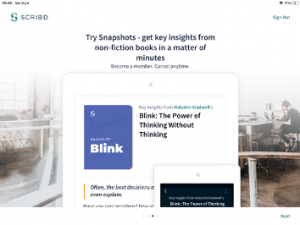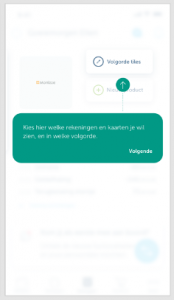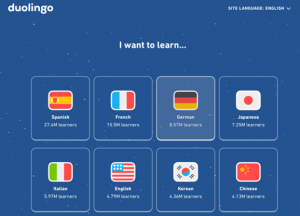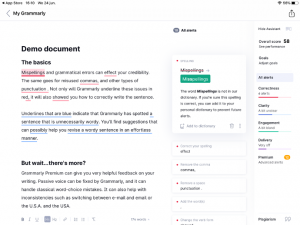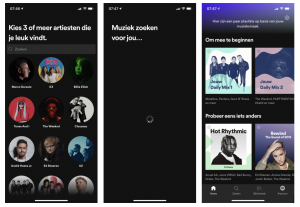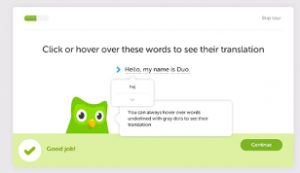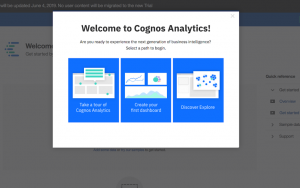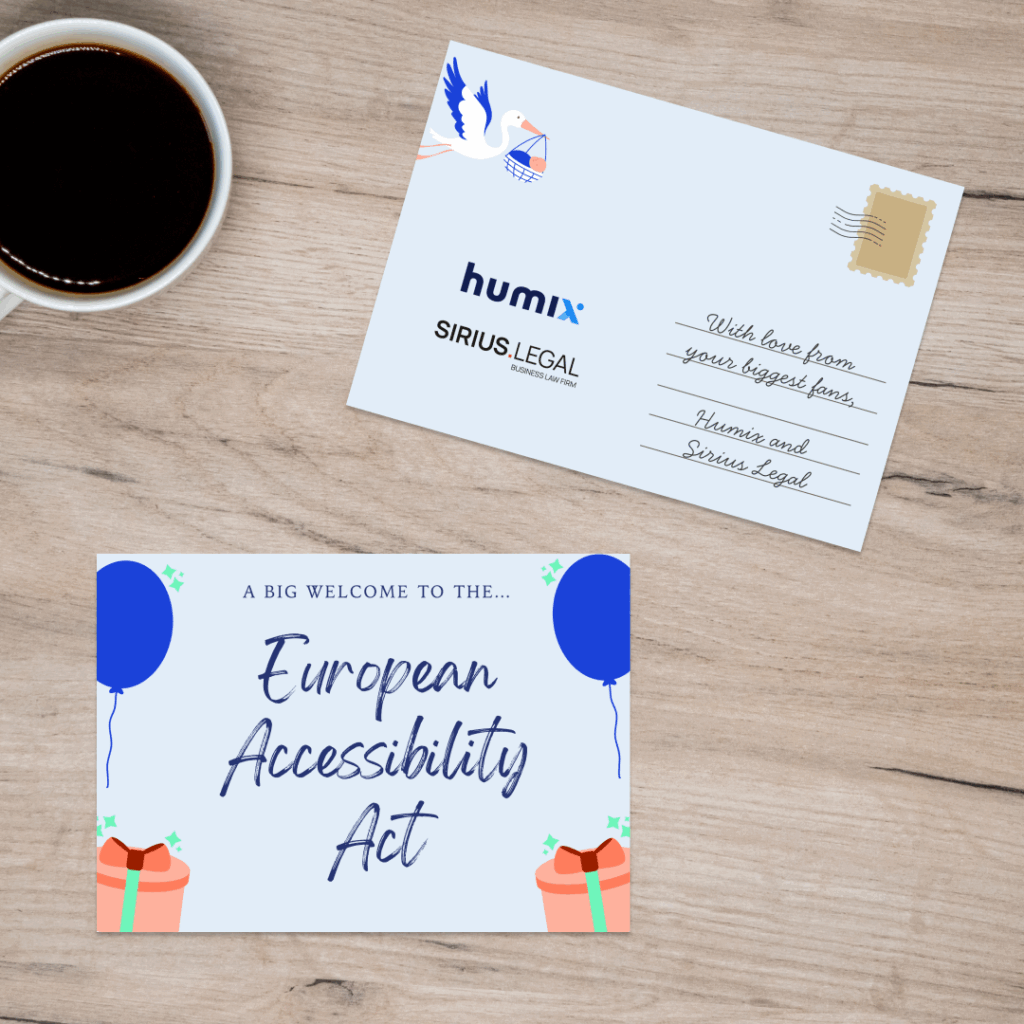Researching into customer onboarding, more specifically into the app or product intro, I was again struck by all the examples of these psychological principles at work. One of these principles is that users will be much more motivated to use a product if they get actively engaged right from the start. In this article, I’ll dive a little bit deeper into what it means to actively engage a user and how you can do that.
First, let’s define what we mean with “product or app intro”. A product or app intro is a short tutorial that explains the core functions of the application to the new user. You can use it to bring your user up to speed fast and to let him or her experience the value (proposition) of your product quickly. It usually pops-up in the form of 3-4 screens in a small wizard or a clickthrough with some arrows pointing to the locations where the user can perform the most basic functions.
Here are some quick examples of app intros:

The demo environment of the Belfius app shows the user where to initiate a new transaction.

Scribd draws attention to Blinks, key points of important books summarized

Telenet explains where you can find the list of most watched channels

KBC shows where you can customize parts of their app
The app intro is one of the most crucial aspects of the user onboarding because it’s the very first time users are interacting with your app or service. If you fail to convince users of the value of your product or fail to give them a good start, you make a bad first impression. Humans typically make very fast judgments about things and it’s hard to convince them otherwise later on. Users don’t make the distinction. They don’t think in terms of bad onboarding. They experience bad onboarding and think bad product!
Active engagement
The first obvious function of the app intro is to inform users about your most important features and explain how to use the product. But you can also take it to the next level and ensure a higher level of loyalty by already actively engaging the users during this onboarding process. Now, how do you actively engage users? Make them:
- Experience value
- Do something
- Choose something
- Own something
Make users experience value
What is in it for me?
People are driven by value. They are wondering: What is in it for me? Is this going to make my life better/easier/more meaningful?
You can use your intro to explain to users what the value of your product is and how your product is going to improve their lives or make their lives more meaningful. However, great things happen when you succeed in not only explaining, but letting users experience the value.
Take the example of Duolingo. In the onboarding procedure, their first step is not to create an account. Instead, they start by asking you what language you want to learn.

When you select a language, they ask what exactly it is that you want to use this language for (how will it improve your life?)

In this example, I chose German (don’t ask me why it’s just an example). Then they ask you a first (rather simple) question about what a Mann is in German. Almost too easy, but hey we score. Next, you’re translating an easy sentence.

Look, we’re only 20 seconds into the onboarding and I’m already learning my new language. At this moment I’m already experiencing the value Duolingo is offering me.
Make users do something
One of the powerful elements of the previous Duolingo example is that users are doing something. Another great example of this is Grammarly. Grammarly is a service that makes your texts and emails better and stronger. It’s a text corrector on steroids.
To teach you how to use this service and what the value is, they show you a sample text. They show some ‘Misspellings’ and you learn how to correct them. A simple click and the error is corrected.

Then they show you some pieces of text that could be improved. You click on the suggestion and you see the text change. Not only have I seen with my own eyes how texts are improved, but I’ve also learned how and where to click. But even more, I’ve done this actively because they made me do it. This is a very nice example of a combination where they make you do something and at the same time demonstrate the value of the product.

Make people own something
Once people own something they are more actively engaged and attached to what they own.
Already owning something also gives them a feeling of progress. A feeling of progress makes them more motivated.
A great example of this principle is offered by Spotify. When you create an account, they ask you to select artists that you like. Based on your choices, they make your personalized playlist. Eh voilà, you own that playlist now. It’s also something very personal to you that they give you as a gift. The law of reciprocity states that when you get a gift, you are inclined to give back, so the chances of you signing up for a paying service are much higher.

Duolingo offers another example of this principle. After I completed the first series of questions and answers, they let me know what my progress is. I only need 6 more XPs (their reward system) to reach my goal. At this moment, I am inclined to complete the series to reach that goal and get closure. They now suggest I create an account If I want to save this progress. Sure I am, sign me up!

A final example in this category is offered by YNAB (You need a budget). This software helps you manage your household budget. It’s a very complex thing where you need to set up different types of accounts, visa cards and expense categories. They do a great job however in running you through this setup process step by step and let me set it up. So after the introductory tutorial I’ve not only learned how to use the application and its functions, I also end up with most of my accounts all set up. So the chances of me continuing and completing the setup are much higher.
Make them choose something
People are motivated by choice. The more they have the feeling they make their own decisions and choices, the more they will feel motivated to use a product and the higher the delight in using that product will be.
The first logical step is to let users decide if they want to see your entire intro or not. Some people will want to skip the intro and they will be happy that they can. Then there is the group that will appreciate the intro, but they too will have the feeling that they choose to follow it.
The simplest application of this is the simple “Skip tour” button. This seems like a no brainer, I know, but it is not always correctly applied, trust me.

Although Duolingo has a very nice and engaging product tour, they also give you the option to skip the tour (in the top right corner)
I came across a more sophisticated example in a -very interesting and recommended- article over at appcues (https://www.appcues.com/blog/the-5-best-user-onboarding-experiences
The example is that of IBM’s Cognos Analytics. The product tour starts with a “choose your own adventure” modal that lets users opt into onboarding experience that fits their needs. This sort of segmentation lets users feel like they’re in control of their onboarding while allowing you to provide more tailored experiences.

Conclusion
Your app intro is one of the most crucial aspects of the user onboarding. It’s the first time the user interacts with your product and is the basis of his judgment about your product: good product or bad product. So don’t let this moment go to waste. Take the opportunity to inform your user about your most important features and explain how to use your application. But also take it to the next level. To strengthen the bond with your users and to make sure you get loyalty over the long term: get them actively engaged.

